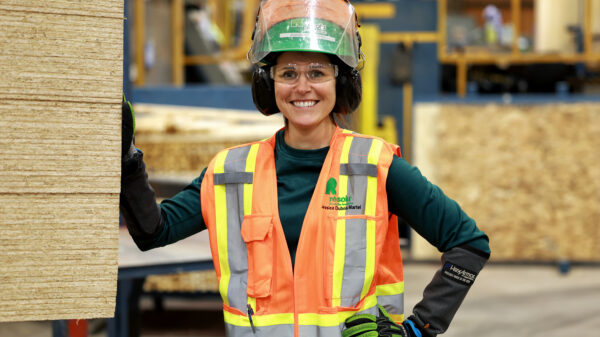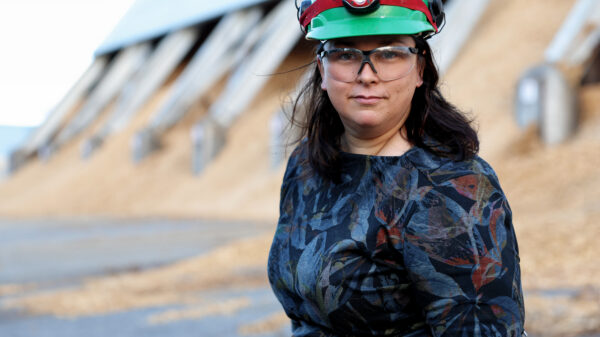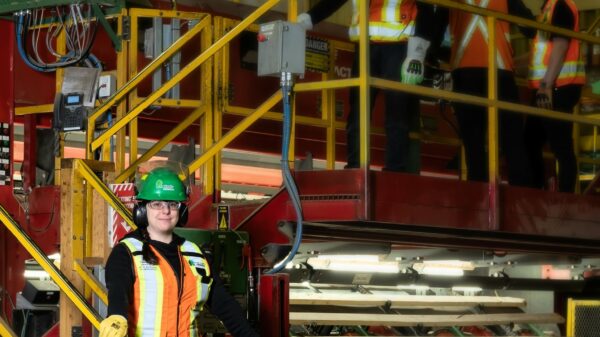Did you know by using forest products, you’re participating in the circular economy?
In a circular economy, natural, renewable resources are transformed sustainably and efficiently, extending their value and reducing waste. As industries adopt this approach, our economy becomes more efficient, more competitive and more sustainable.
The forest products industry is at the forefront of the shift toward a circular economy. It starts with our primary input: wood fiber, which is a renewable, natural resource. We harvest trees for lumber, and transform the rest of the tree into useful everyday products. Our processes are highly efficient, designed to minimize waste and carbon emissions. By investing in innovation, we continuously find ways to operate even more efficiently, and develop new uses for fiber. And since wood products store carbon long term, and paper products are recyclable, wood is a resource that keeps on giving.
In this mini blog series, we’re focusing on three ways Resolute is contributing to the circular economy. Previous posts focussed on integration and innovation. In this post, we’ll discuss the relationship between the circular economy and our climate objectives. We hope this mini blog series brings the concept of circular economy to life for you!
Circular Economy in Action: Climate
In a circular economy, we minimize waste and maximize efficiencies, while extending the value of the natural resources in our care. As we saw in previous posts, Resolute embraces the principles of a circular economy through strategies like operational integration, and adopting innovative technologies and practices. These strategies have another important impact: reducing our greenhouse gas (GHG) emissions.
In 2011, Resolute set an ambitious target to reduce GHG emissions generated by our operations. We committed to decreasing our absolute GHG emissions (scope 1 and 2) by 65% by 2015, compared to year-2000 levels. By the end of 2015, we had sailed right past the target, reaching a reduction of 70%. But we didn’t stop there – by the end of 2020, we announced that we decreased scope 1 and 2 emissions by 83.4% vs. the year-2000 baseline.
And we’re not stopping there. In March 2021, we set a new commitment: to reduce scope 1 and 2 GHG emissions by 30% against 2015 levels by 2025. By achieving this target, Resolute will have reduced our emissions by nearly 700,000 metric tons of CO2 equivalents per year compared to our 2015 level. Our focus on improving energy efficiency and replacing high-emission fuels with less-carbon-intensive fuels places Resolute ahead of potential regulations, positioning the company as a leader in GHG emission reductions, and in the development of new, sustainable products with a lower carbon footprint.
The forest products industry contributes to global climate objectives in several other ways:
- – Harvesting sustainably. Responsible forest management reduces a forest’s potential as a carbon source. The role of forest products in meeting global climate targets has been described by the United Nations’ International Panel on Climate Change and many other experts. 100% of the woodlands Resolute manages are third-party certified to internationally recognized certification standards.
- – Displacing less sustainable materials. Using forest products avoids emissions generated by much more carbon-intensive building materials. Learn more here.
- – Reducing natural disturbances. Working with provincial jurisdictions, the forest products industry employs measures to reduce forest fires risks and insect infestations, reducing the emissions caused by natural disturbances.
- – Producing renewable energy. Optimizing the use of renewable energy is a key element of Resolute’s strategy to reduce our carbon footprint. In 2020, Resolute generated about 75% of our total energy needs (18,825 GWh) from renewable sources, such as hydroelectricity and carbon-neutral biomass.
- – Sequestering carbon in forest products.Trees remove carbon dioxide from the atmosphere as they grow. When trees are harvested to make useful products – for example, wood for home building, renovation and repair; or paper for school books – that carbon remains sequestered as long as the fibers are in use.
The tangible measures Resolute has taken to minimize our carbon footprint are underpinned by a commitment to accountability and transparency. Since 2008, we have tracked and reported on a range of environmental, economic and social performance indicators. Since 2010, we have prepared reports in accordance with the Global Reporting Initiative (GRI) guidelines for sustainability reporting, and since 2018, in accordance with the GRI Standards. Resolute has also reported our carbon footprint to CDP since 2006, beginning with scope 1 and 2 GHG emissions, and adding scope 3 (supply chain) emissions in 2015.
The shift to a cleaner and more efficient circular economy is exciting – and supports our sustainable collective future.







